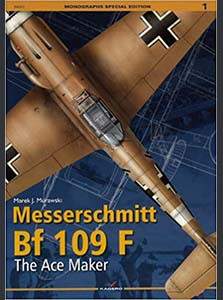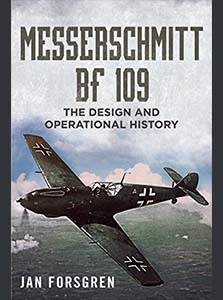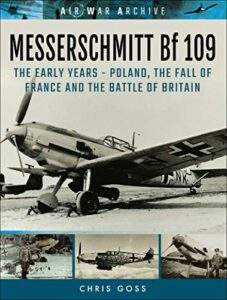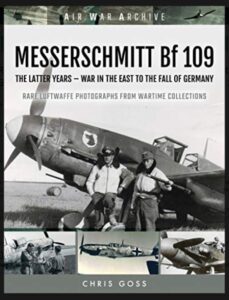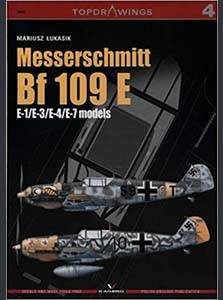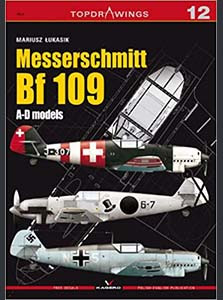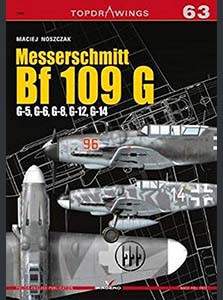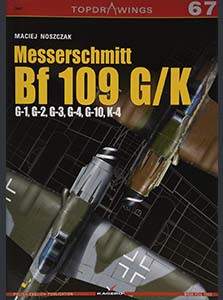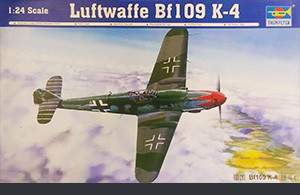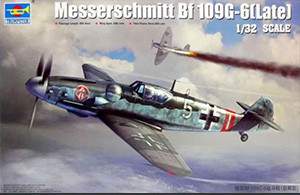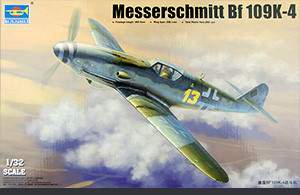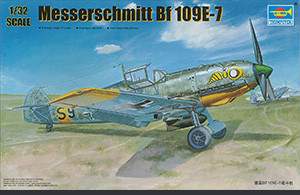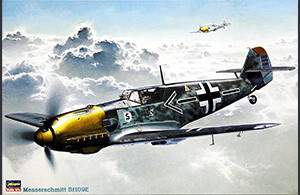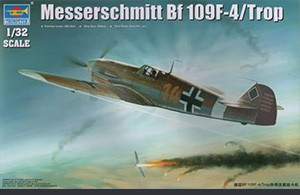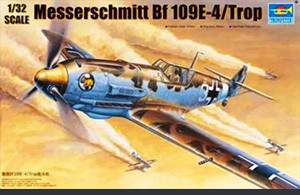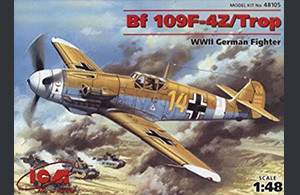Home » Military Aircraft » World War 2 Aircraft » Messerschmitt Bf-109
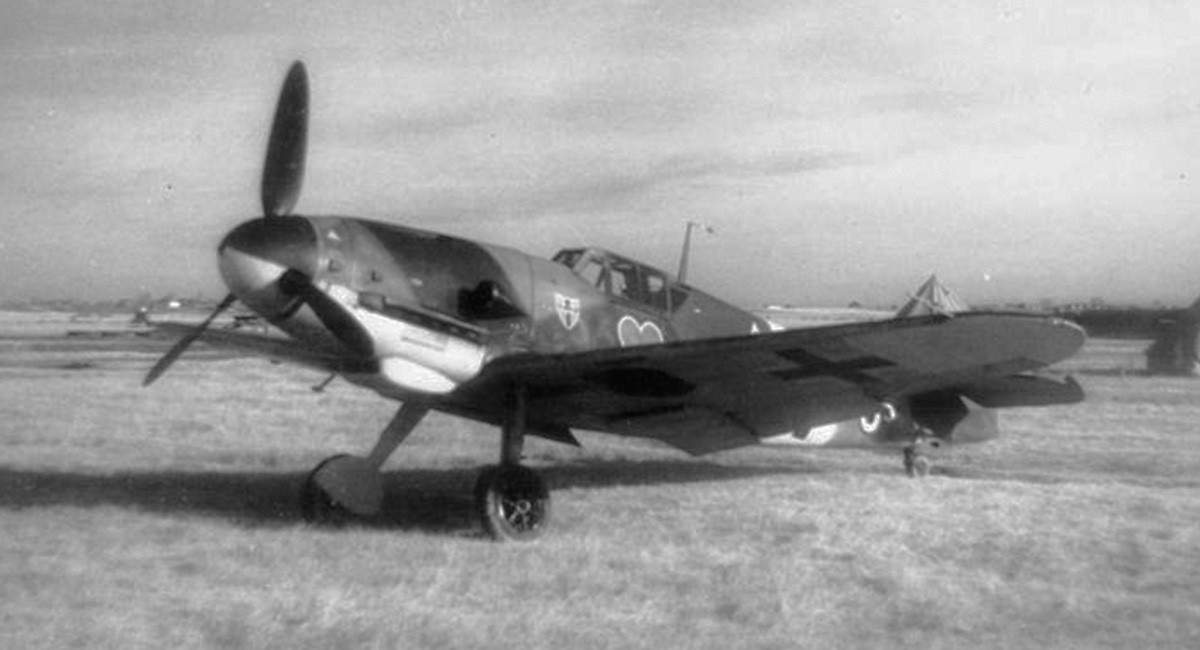
Messerschmitt Bf 109
Role: FIGHTER | Period: WORLD WAR 2 | Nation: NAZI GERMANY
Category: Fighter, Fighter-bomber, Night fighter
Crew: 1
Engine: One reciprocating (piston) engine
Manufacturer: Bayerische Flugzeugwerke (BFW) – Messerschmitt AG
Number built: Approx. 34,000
First flight: 29 May 1935
Introduction: February 1937
Retired: 9 May 1945 (Luftwaffe) / 27 December 1965 (Spanish Air Force)
Users: Luftwaffe, Condor Legion (Nationalist faction during the Spanish Civil War), Swiss Air Force, Royal Yugoslav Air Force, Hungarian Air Force, Royal Romanian Air Force, Slovak Republic, Aeronautica Nazionale Repubblicana (Italian Social Republic), Finnish Air Force, Spanish Air Force
The Messerschmitt Bf 109 was a German fighter aircraft that was developed in the mid-1930s under the direction of Willy Messerschmitt and Robert Lusser. In its day, it was a modern aircraft with an all-metal construction, an enclosed cockpit and retractable landing gear. Before and during World War II, the aircraft formed the backbone of the Luftwaffe’s fighter force. It was commonly called the Me 109, but this was not the official name. Many variants were produced, and each of the main versions of the Bf 109 included its other sub-variants for specialized tasks, often modified in field conditions.
The Bf 109E-3 had a take-off weight of 5,750 lb (2,608 kg), an ammunition load of approximately 551 lb (250 kg). It had a maximum speed of 354 mph (570 km/h), a service ceiling of 33,792 ft (10,300 m), and a maximum range of 410 miles (660 km).
The Bf 109K-4 had a take-off weight of 7,716 lb (3,500 kg), an ammunition load of approximately 551 lb (250 kg), a maximum speed of 423 mph (680 km/h), a service ceiling of 41,010 ft (12,500 m) and a maximum range of 528 miles (850 km).
The Messerschmitt Bf 109 set several world records, such as the speed record of 11 November 1937, when it broke the speed of 379.62 mph (610 km/h). It is also the fighter aircraft with the largest number of units produced and the largest number of enemy aircraft shot down in aviation history.
Variants and operational history
Bf 109A “Anton” (1937 – 1938)
Around 20 of the first versions were produced and are collectively referred to as the Messerschmitt Bf 109A. They had a twin-bladed propeller and their appearance gradually changed as the design improved. Armament consisted of a pair of 7.7 mm (.303 in) machine guns. Most of the Bf 109A took part in the Spanish Civil War (1936-1939) as part of the Condor Legion, which fought on the side of the Nationalist faction.
Bf 109B “Berta” (1937-1938)
In the Bf 109B variant, the wooden twin-bladed propeller was gradually replaced by a metal variant and a third machine gun of 7.7 mm (.303 in) calibre was added, firing through the propeller axis, but it was not very reliable. The Messerschmitt Bf 109B was deployed in the Spanish Civil War, 341 were produced.
Bf 109C “Caesar” (1938 – 1938)
The Messerschmitt Bf 109C had a new engine and strengthened wings, in which two 7.7 mm (.303 in) machine guns were installed, increasing the total number of machine guns to four. Further experiments were conducted with the configuration of the armament, with machine guns and 20 mm guns being tested, firing through the propeller axis or mounted in the wings. A total of 58 were produced and the Bf 109C also participated in the Spanish Civil War.
Bf 109D “Dora” (1938 – 1939)
Before the start of World War II, the “Dora” was the standard version in the service of the Luftwaffe. The Messerschmitt Bf 109D was deployed in the Spanish Civil War, but saw minimal action in World War II, as it was quickly replaced by the new Bf 109E. Standard armament consisted of 4 7.7 mm (.303 in) machine guns, but other combinations of on-board weapons were developed. 647 were produced, and several Bf 109Ds were sold to Hungary and Switzerland.
Bf 109E “Emil” (1938 late – 1940)
The Messerschmitt Bf 109E had a new engine and three-bladed propeller, a redesigned nose and added radiators under the lower wing surfaces. A special desert battlefield variant was created which had an enlarged dust filter on the left side of the engine. Inside the fuselage was a desert survival kit box, which held food, medicine, water, and a Mauser K.98k rifle. Armament consisted mostly of two 7.92 mm (.312 in) machine guns and two 20 mm cannons. The ability to carry bombs and later a drop tank was added. In its day it was one of the best fighters in the world, with over 4,000 produced.
The Bf 109E was in the armament of the Royal Yugoslav Air Force, its aircraft clashed with their German counterparts after the Axis invasion of Yugoslavia. Other users were the Swiss Air Force, the Royal Romanian Air Force and the Slovak Republic. The Messerschmitt Bf 109E variant participated in the Spanish Civil War, the Invasion of Poland (1939), the Battle of France (1940), the Battle of Britain (1940), operations in the Mediterranean and Middle East, and the Eastern Front.
- Bf 109E-1 (1938 late – 1940) – fighter, fighter-bomber
- Bf 109E-3 (1939 – 1940) – export, fighter and fighter-bomber versions
- Bf 109E-4 (1939 – 1940) – fighter and fighter-bomber version, also in “Trop” variant
- Bf 109E-5/6/9 – reconnaissance versions
- Bf 109E-7 (1940 August – 1941) – fighter version with extended range, ground attack variants, also in “Trop” variant
Bf 109F “Friedrich” (1940 – 1942)
The new version of the Bf 109F differed significantly from its predecessor. The airframe of the aircraft was significantly changed and gained much better aerodynamic characteristics. With the new engine, the nose of the aircraft was redesigned, which had a larger propeller spinner. The wing was also redesigned, with the radiators under the wing being reduced in size and moved to the rear. The struts at the horizontal tail surfaces were removed, the rear fuselage was stiffened and the tailwheel was partially retractable. For this version, modification kits (Rüstsätze) were used for the first time, allowing the aircraft to be modified for specific tasks in field conditions. A “Trop” variant was also created for combat operations in the desert.
Armament consisted of two 7.92 mm (.312 in) machine guns and most often one 20 mm cannon (a 15 mm cannon was also used), which was considered one of the few shortcomings of the new aircraft. Approximately 3,500 of the “F” version were produced. The Messerschmitt Bf 109F was deployed mainly on the Eastern Front and in the Mediterranean and Middle East, but also operated on the Western Front. During Operation Barbarossa (1941) it made up half of the armament of all Luftwaffe fighter units on that battlefield. From October 1942, the Bf 109F was part of the Royal Hungarian Air Force, where it operated on the Eastern Front.
- Bf 109F-1 (1940 July – 1941 January) – fighter
- Bf 109F-2 (1940 October – 1941 August) – fighter, “Trop” variant
- Bf 109F-4 (1941 May – 1942 May) – various configurations of on-board weapons, high-altitude fighter, “Trop” variant
Bf 109G “Gustav” (1942 – 1945)
This was the main and most numerous version, which had many sub-variants. In total, more than more than 26,000 units were produced, representing approximately 60% of all Bf 109s produced. The Messerschmitt BF 109G was very similar to the Bf 109F-4, but was slightly heavier. Gradually, new engines were added and the aerodynamics of the aircraft were further improved. The on-board armament was also improved, with different configurations for each sub-variant. The aircraft could carry various bombs, an additional tank, gun pods and unguided missiles against bomber formations. The armament consisted mainly of two 13 mm (.51 in) machine guns and one 20 mm cannon (later replaced by a 30 mm cannon in some variants).
From 1943 this aircraft was delivered to Finland in a number of 159 pieces and was immediately deployed against Soviet fighters. By the end of the war, Finnish pilots had scored 667 confirmed kills, while their own losses were 34 aircraft. “Gustav” served in the Finnish Air Force until 1954. From 1943, the Bf 109G was delivered to the Repubblica Sociale Italiana and the Royal Hungarian Air Force. The Messerschmitt Bf 109G was deployed on both the Eastern and Western fronts, in the Mediterranean and Middle East, as well as at the end of the war in the defence of Germany.
The most successful pilots on this type were Erich Hartmann and Gerhard Barkhorn, each of whom scored more than 300 kills on this type.
- Bf 109G-1 (1942 February – June) – fighter, high-altitude fighter, reconnaissance variant
- Bf 109G-2 (1942 May – 1943 February) – fighter, long-range fighter-bomber, reconnaissance and “Trop” variants
- Bf 109G-3 (1943 January) – high-altitude fighter
- Bf 109G-4 (1942 September – 1943 May) – fighter, reconnaissance and long reconnaissance variant and “Trop” variant
- Bf 109G-5 (1943 February – 1944 June) – high-altitude fighter and high-altitude reconnaissance variant
- Bf 109G-6 (1943 February – 1944 August) – fighter, high-altitude fighter, night fighter, reconnaissance and “Trop” variant
- Bf 109G-8 (1943 August – 1945 February) – reconnaissance variant
- Bf 109G-10 (1944 September – 1945 March) – fighter, bad-weather fighter and reconnaissance variant
- Bf 109G-12 (1944 January – 1944 July) – converted to a two-seat variant for training
- Bf 109G-14 (1944 July – 1945 February) – fighter, high-altitude fighter
Bf 109K-4 “Kurfürst” (1944 August – 1945 March)
The Messerschmitt Bf 109K “Kurfürst” was the last wartime variant and was based on the latest Bf 109G-6 and G-14 types.The designers had to improve the weaker aspects of the Bf 109 (especially the weaker armament and poorer take-off and landing performance) and further advance its combat value. The main visual difference is the fully covered undercarriage and tailwheel and a new cockpit overlay (common with the latest versions of the Bf 109G). The only production variant became the Bf 109K-4 fighter. The aircraft entered combat service in the autumn of 1944. It participated in the defence of Germany at the end of the war. The Bf 109K could stand up to even the best fighters of the enemy, approximately 1,700 were produced.
Operational service
The primary user of the Messerschmitt Bf 109 was the Luftwaffe, but it was in service in smaller numbers with many nations (mostly on the Axis side), and flew in some long after the end of World War II. During the war it operated on all European and Mediterranean battlefields. Towards the end of the war, a situation arose when Romania joined the Allied forces (thanks to a coup in August 1944) and Royal Romanian Air Force pilots fought in their Bf 109s against the Luftwaffe and the Hungarian Air Force. A similar situation had already occurred in 1941, when this aircraft was in the armament of the Yugoslav Air Force. During the German invasion of Yugoslavia in April 1941, there were duels between Yugoslav and German Bf 109s.
- Spanish Civil War (1936 – 1939)
- World War 2 (1939 – 1945) – European Theater – Western Front
- World War 2 (1939 – 1945) – Mediterranean and Middle East War Theater
- World War 2 (1939 – 1945) – European Theater – Eastern Front
CONTENT
Gallery
Bf-109 - Books
